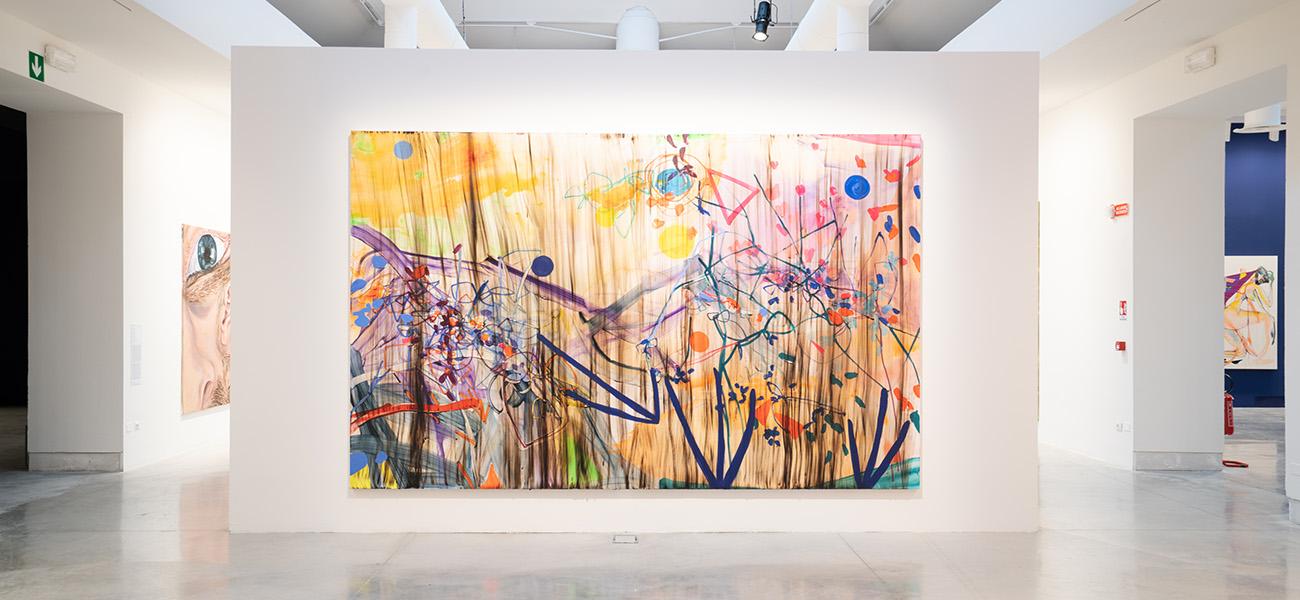Global South focus in Venice: The Milk of Dreams
A selection of artists in and related to Global South regions
The 59th International Art Exhibition of La Biennale di Venezia, curated by Cecilia Alemani, opened to the public on 23 April at the Giardini (central pavilion) and the Arsenale. The international exhibition, titled The Milk of Dreams, comes from the children’s book by Leonora Carrington which contains stories of hybrid creatures and presents a world re-configured through the imagination, and where the transformation of characters is possible. This surreal, dreamlike context for the foundation of the show offers an avenue to look at hybridity, the posthuman and re-defining social and political parameters of engagement and definition. The Milk of Dreams includes work from over 200 artists from 58 countries and focuses on three themes through the Central Pavilion and the Arsenale: the representation of bodies and their metamorphoses; the relationship between individuals and technologies; and the connection between bodies and the Earth. Taking SOUTH SOUTH’s departure point of the Global South being a fluid geopolitical term rather than a strictly geographical term, we take a look at a few of the artists from SOUTH SOUTH’s community of galleries that offer a perspective from or related to the Global South.
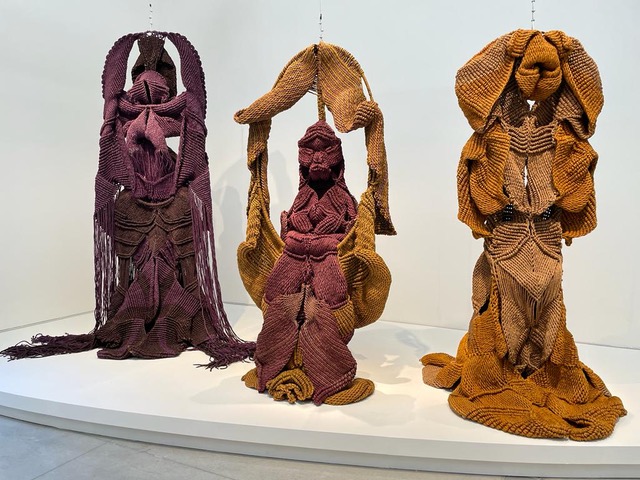
Mrinalini Mukherjee, install view as part of the 59th International Art Exhibition The Milk of Dreams. Image courtesy of Jhaveri Contemporary.
Rosana Paulino’s practice explores the history of racial violence, social, ethnic, and gender issues, focusing in particular on black women in Brazilian society and the various types of violence they suffer due to racism and the lasting legacy of slavery.Her work unravels the production and dissemination of racist theories and myths that formed the foundation of European justification for colonialism and the slave trade. In Paulino’s works on show – all from varying moments in her career – the human, the environment and the tensions of social, historical and racial frameworks intertwine. In the Weavers (2003), roots grow from women’s breasts, vaginas, eyes, and mouths. The viewer witnesses the branchlets torturing and squeezing the women from which they grow. The series Senhora das plantas (2019) depicts webs of roots and plants spreading from women’s bodies. Connecting more directly to the thematics of metamorphosis and the body, in the series Carapace of Protection from the early 2000s, bodies emerge from cocoons, at once conjuring thoughts of being reborn while bringing to mind the human-as-insect, transforming into another evolutionary category of itself.
Indian artist Mrinalini Mukherjee, worked intensively with the soft Bengali fibre known as sunn or sann. – and later, bronze and ceramic – for most of her four-decade career. She stretched the possibilities of sculpture through her mediums, scale of works, and combinations of abstraction and figuration. Her three works Devi (1982), Rudra (1982), and Vanshree (1994) at Venice, through the construction of the human figures through fibre, speak to the connection between bodies and the Earth and the molding of our fate through the environment while alluding to human sensuality through their form.
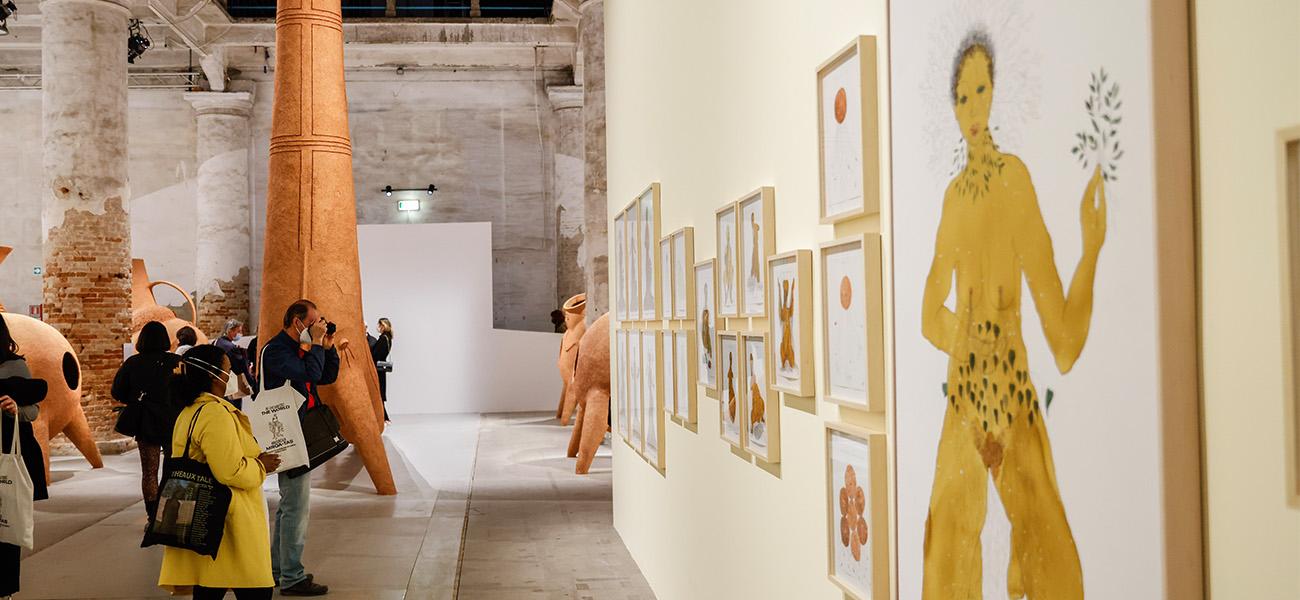
Rosana Paulino, install view as part of the 59th International Art Exhibition The Milk of Dreams. Image sourced from La Biennale di Venezia’s website.
An artist whose practice also has fibrous roots is Sheroanawe Hakihiiwe – a Yanomami artist who lives and works in Pori Pori, a community in the Upper Orinoco, at the Venezuelan side of the Amazon rainforest – takes as his point of departure the knowledge systems, memory, spiritual practices and aesthetics of Indigenous life. Hakihiiwe learnt to make paper with plant fibres with Mexican artist Laura Anderson Barbata in 1992, paving the way for his reflection on Indigenous practices and a significant part of his artistic defiance against erasure. His works on show reference element of nature, including insects, leaves and animals articulated through lines and dotted triangles in pieces like Iri mamiki (2021) invoke the image of budding branches; in Yaro shinaki (2021), the leaves of a yaro tree; and in Omawe (2021), a dragonfly.
Jadé Fadojutimi’s vibrant colours and explosive brushstrokes find their presence in three new paintings produced for the show: The Prolific Beauty of Our Panicked Landscape (2022); And that day, she remembered how to purr (2022); and Rebirth (2022). The viewer is almost fully encapsulated by these works due to their impressively large scale. With these works, as with her other works, the familiar is obscured, becoming elusive and transcending the fixed nature of categorisation.
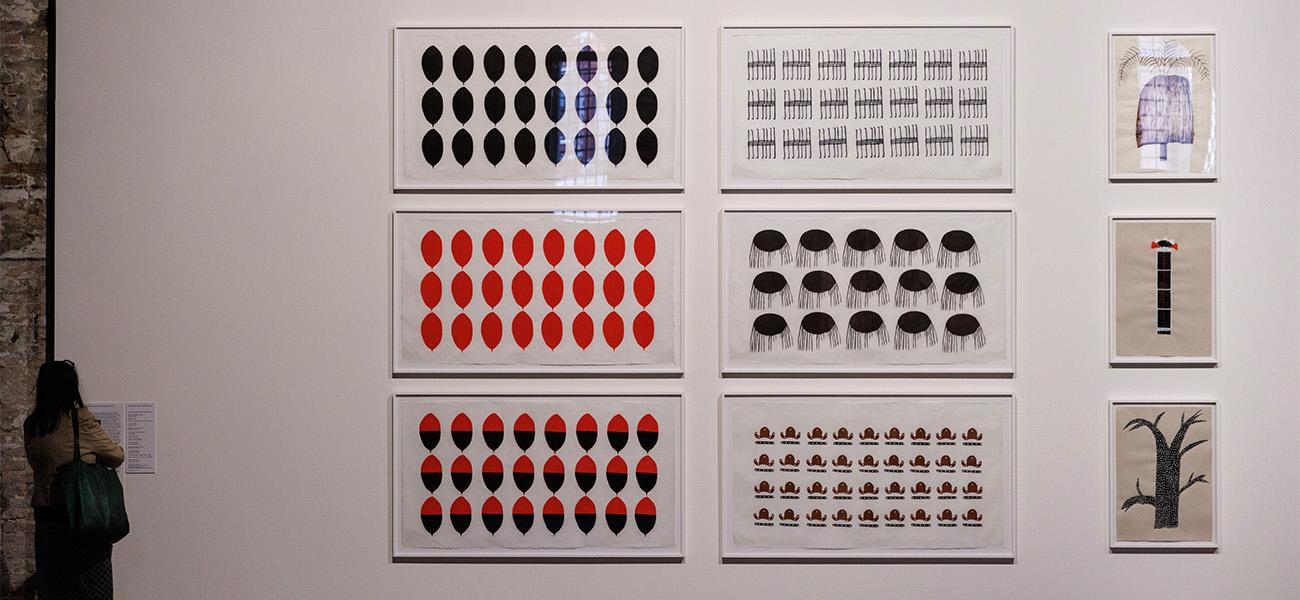
Sheroanawe Hakihiiwe, install view as part of the 59th International Art Exhibition The Milk of Dreams. Image sourced from La Biennale di Venezia’s website.
Aki Sasamoto’s mastery of performance, mixed media practice and viewer immersion comes to the fore in her installation Sink or Float (2022). On top of a series of tables constructed from stainless-steel commercial sinks that have been retrofitted with thousands of small air-blowing holes, a collection of objects enacts a chaotic, improvised set of movements. In one end of the building containing the installation is a rotisserie oven and a commercial cooler that have been transformed into light boxes. Through these seemingly confusing elements Sasamoto is able to transform the everyday into an environment of re-imagining, paving a way for the viewer to interrogate their own perspectives and perceptions.
The late Ficre Ghebreyesus’ paintings capture the complexity of his childhood in Eritrea during the War of Independence (1961–1991) and life in diaspora after he left as a teenaged refugee to Sudan, Italy, and Germany, before finally settling in the United States. His works present fantastical landscapes drawn from longing for a time and place interrupted by conflict. In one his work, City with a River Running Through (2011), a cityscape of the modernist stucco-painted houses found throughout Asmara is constructed from a chequerboard of orange and peach forms that resemble traditional Eritrean basketry and embroidery.
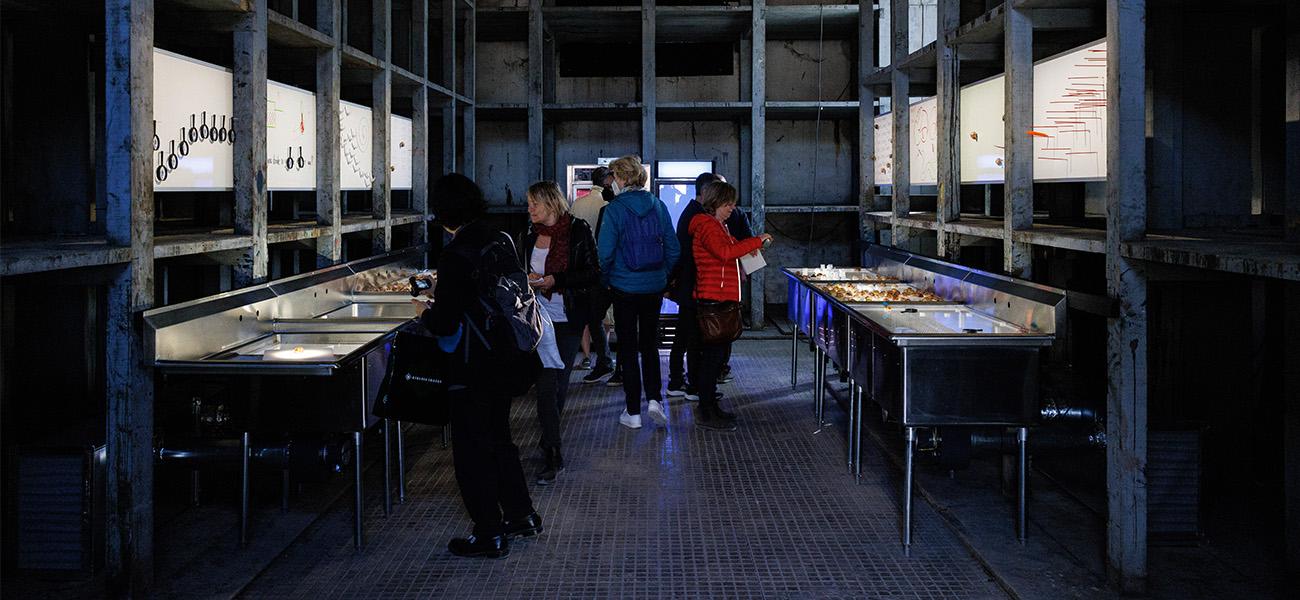
Aki Sasamoto, install view as part of the 59th International Art Exhibition The Milk of Dreams. Image sourced from La Biennale di Venezia’s website.
Prabhakar Pachpute’s large-scale landscapes and sculptures also draw on elements of the fantastic. In his practice he works in an array of mediums and materials, including drawing, light, stop-motion animations, sound and sculptural forms. Of particular significance is his use of charcoal as it has a direct connection to his subject matter and familial roots: coal mines and coal miners. He employs surrealist tropes to critically tackle issues of mining labour and the effects of mining on the natural and human landscape. His ten-metre-wide landscape Unfolding of the Remains-II (2022) positions the viewer on the lip of a mining pit, with animals traditionally used for their labour in mining operations and displaced by the same activities traversing the despoiled landscape. In the distance vaguely mechanical and biomorphic forms point to the intrusion of the mining industry. The mixed media sculpture adjacent to this work, The underground nest over the dune-II (2022), mirrors the emptiness of the landscape and the consequences of gluttonous extraction.
Kapwani Kiwanga’s Terrarium (2022), a new installation for The Milk of Dreams, consisting of large semi-transparent paintings with a desert sunset palette and a series of glass sculptures containing sand. Like Pachpute, Kiwanga uses materials in a metaphorical and literal way to address the negative impact of human intervention on the landscape. In Terrarium, as with other recent works by the artist, sand is used to highlight the oil industry’s exploitation of natural resources, where sand is a harmful product, as well as sand being a reminder of an increasingly arid planet. Invoking a desert-like environment and using sand in this politically metaphorical way, gives the earth a form of almost vocal articulation in confrontation with destruction by people.
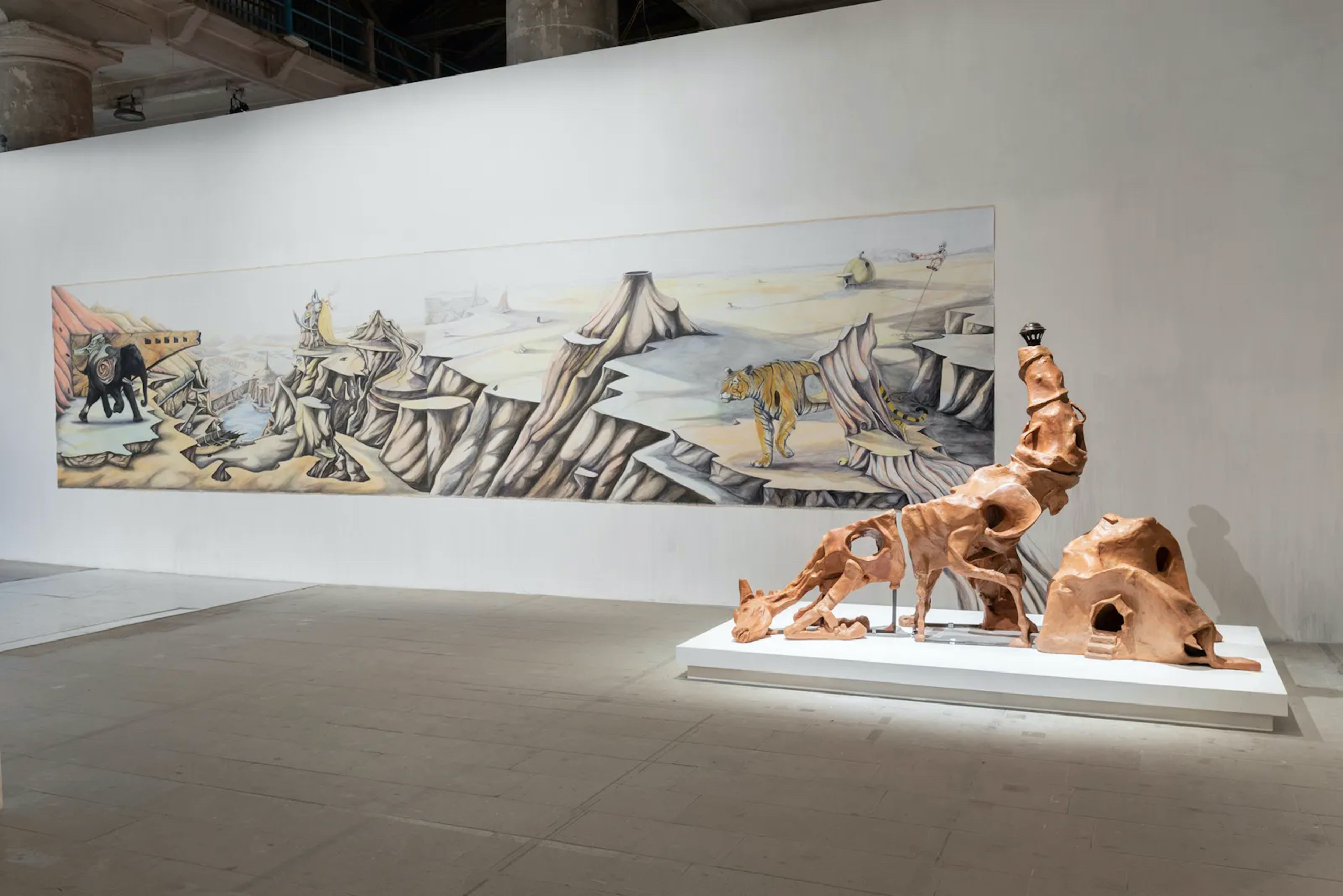
Prabhakar Pachpute, install view as part of the 59th International Art Exhibition The Milk of Dreams. Image courtesy of Experimenter.
This exploration of artists is in no way comprehensive in sharing the presence of the Global South throughout the Biennale. Nor does it touch on all the artworks presented by each artist discussed above. It is, however, a starting point from which one can explore the biennale with a lens focused on artists and artworks from and/related to Global South regions. Visit The Milk of Dreams on the Biennale website to view more artists.
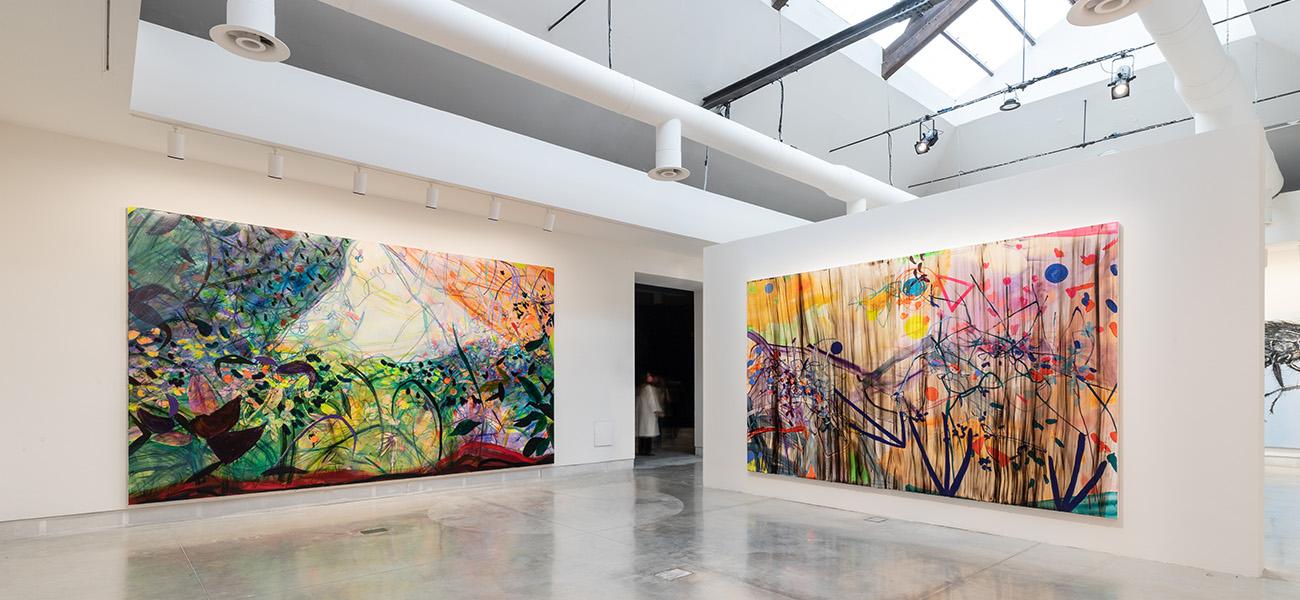
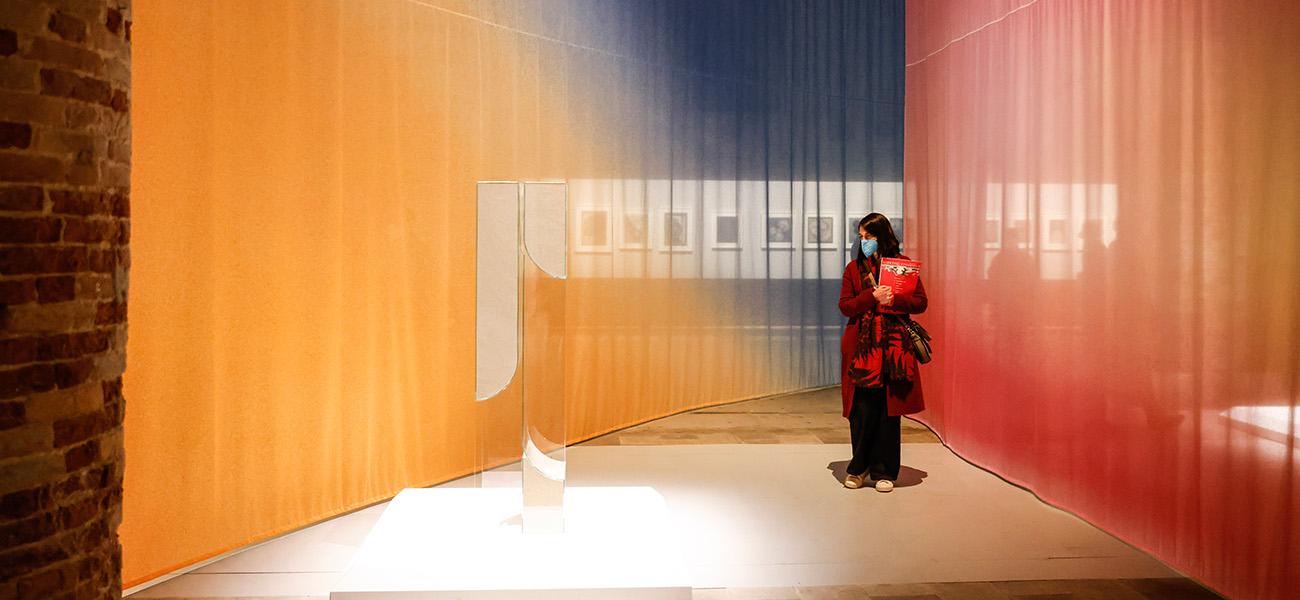
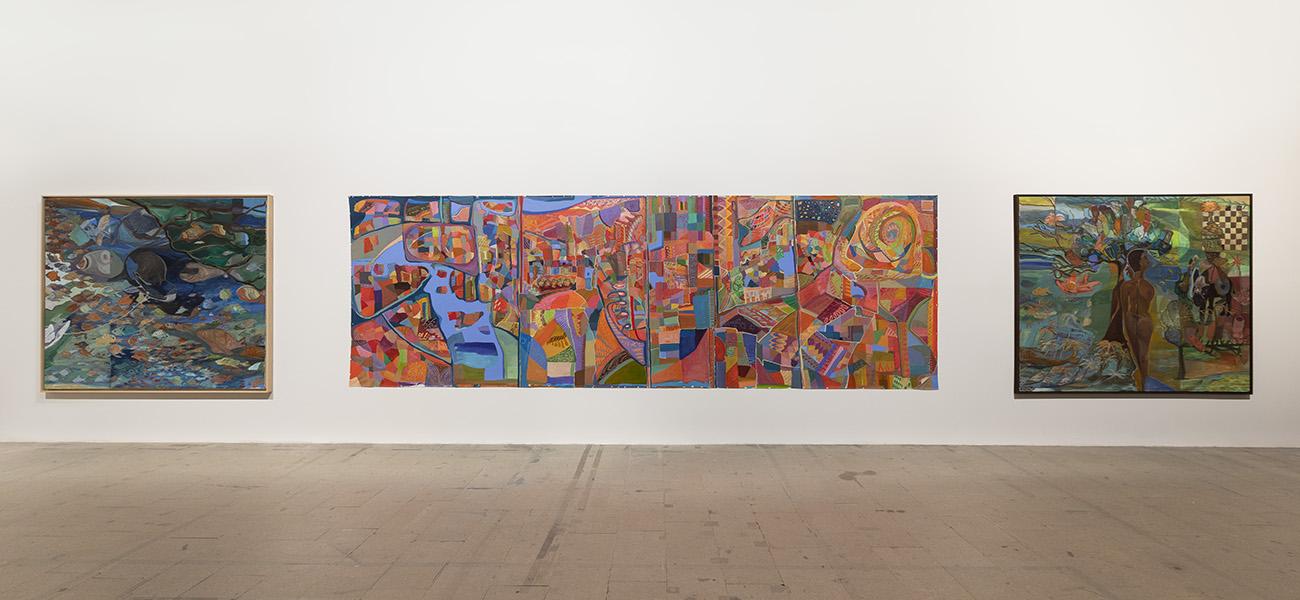
Top: Jadé Fadojutimi, install view as part of the 59th International Art Exhibition The Milk of Dreams. Image sourced from La Biennale di Venezia’s website.
Middle: Kapwani Kiwanga, install view as part of the 59th International Art Exhibition The Milk of Dreams. Image sourced from La Biennale di Venezia’s website.
Bottom: Ficre Ghebreyesus, install view as part of the 59th International Art Exhibition The Milk of Dreams. Image sourced from La Biennale di Venezia’s website.
CREDITS
This text was produced in reference to text by Madeline Weisburg, Liv Cuniberti & Ian Wallace

